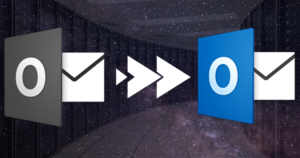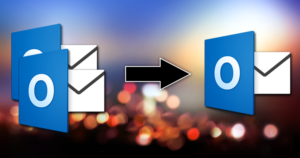An MSG is a file format that Microsoft Outlook uses to store a single email/appointment/task/or any other single object. However, most users struggle to open MSG file in OWA. If you also want to know how to open MSG files in Outlook Web Access, this professional blog will help you. Here, we will share the ways to view an MSG file with or without Outlook and using Outlook online. Moreover, we will also understand what an MSG file is in detail and then move on to all the possible methods to view the Outlook MSG file.
What is an MSG File, and What is Its Extension?
An MSG file is a simple file format to store individual objects. Microsoft Exchange and Outlook generally store single email data in this file format. An MSG file not only stores the body of a single email but also stores email attachments, metadata, and other essential details.
Users can create an MSG file of an individual email message by exporting and saving an email from Outlook to an individual file. Apart from this, this file format is highly structured, and users can also save contacts, tasks, or notes from Outlook.
File Extension of the Outlook MSG File
When users save an MSG file from Outlook to a separate file, it is stored as a .msg file extension. These files use binary file formats that Microsoft also provides in other products, including MS Word, Excel, etc.
- File extension of the MSG file: .msg
- MIME Type of the MSG file: application/vnd.ms-outlook
We hope you now completely understand what the MSG file is and its file extension. We will move on to the solutions to view MSG files in Outlook Web Access and with or without Outlook.
How to Open an MSG File?
Users can view an MSG file in multiple ways, with or without Outlook and using Microsoft Outlook Web Access. Let us understand each way one by one to view MSG files effectively.
Steps to Open an MSG File with Outlook Desktop
There are various ways that users can view an MSG file on Outlook desktop, like drag and drop, etc. Here, we will share one of the easiest ways users can open MSG files using Microsoft Outlook.
- Go to the location where you have saved the MSG file.
- After that, right-click on the MSG file and continue with the Open with
- Then, you need to tap the Outlook.
- Now, the MSG file will open in the Outlook email client.
Users can also drag and drop the MSG file into Outlook to view the MSG file. To know the steps, read the following section.
Drag & Drop the MSG File into Microsoft Outlook
As Outlook supports the MSG file, it is easy for users to drag and drop the MSG file to view its content, such as body, attachment, etc. Let’s now take steps to open the MSG file.
- Move the MSG file to the Desktop from its original location.
- After that, drag and drop the MSG file into Outlook.
- Now, you will be able to access the MSG file data, including email messages, attachments, contacts, calendars, etc.
These are the solutions that users can use to open MSG files in Outlook email clients. However, if you want to view the MSG file without Outlook, the paragraph below will elaborate on it.
Solution to Open the MSG file Without Outlook
Users can open the MSG file without Outlook using other email clients that support the MSG file format. Moreover, users can also go for a free professional MSG viewer to open the MSG file, like the Shoviv MSG Converter Tool. This software is easy to use, and users can easily view all the data in their MSG files. This tool also provides various facilities to simplify users’ tasks, including converting MSG to PST and EML format and exporting MSG files to Office 365 and Microsoft Exchange.
To access its advanced features, users must need to get the full version of this professional software. However, if they only want to view the MSG file, they can use its free version. This is an easy and quick way to open the MSG file without the Outlook email client. Moreover, users do not even require technical understanding to use this automation to view the MSG file.
Method to View an MSG File in Outlook Web
Outlook Web Access doesn’t support MSG files, so users can’t open MSG files directly on Outlook Web. Therefore, users must prefer a third-party tool, like the Shoviv IMAP Backup and Restore Tool. Users can easily restore/import the MSG files into Outlook web to view the MSG file. Moreover, this software is proficient in restoring PST, EML, and MBOX files to IMAP mailboxes. It also allows users to back up their IMAP account data in numerous formats, including OST, PST, MBOX, and other formats.
This software is capable of performing numerous backup or restore jobs without affecting the speed of the process. It also provides a filter facility, which allows users to filter email items on date range and folder basis. Using this third-party tool, it is easy for users to open the MSG file in Outlook Web Access. Users can also try its free demo version if they want to know the capability and efficiency of the software before getting its full version.
Summing Up:
In this blog, we have discussed MSG files and how to open them with or without Outlook desktop and Outlook web. If you wish to open the MSG files in Outlook Web Access, the Shoviv IMAP Backup and Restore Tool is the best option. It provides advanced and updated features to ease complex tasks in a quick way. This software’s free demo version allows users to process the first 50 items per folder freely.
Moreover, users can also try the Shoviv MSG Viewer Tool to view the MSG file content without Outlook. Users can freely download this software in their system to open the MSG file without Outlook dependency.
- How to Backup and Restore Emails in Webmail? - March 25, 2025
- How to Migrate Outlook to New Computer? - February 15, 2025
- Fix If Outlook Cannot Display the Specific Folder Location - February 1, 2025


